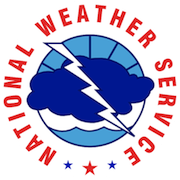Summary | Excerpt | Reviews | Beyond the Book | Read-Alikes | Genres & Themes | Author Bio

A Natural and Cultural History
by Cynthia BarnettThis article relates to Rain
 One of the many people profiled briefly in Rain: A Natural And Cultural History, is Cleveland Abbe, a pioneer in American meteorology. Born in New York City in 1838, the eldest of seven siblings, Abbe would go on to earn professional degrees in astronomy. But as he advanced his studies, he increasingly came to realize the intersection between the study of celestial objects and the weather: "Astronomers who would improve their meridional measurements must investigate their local atmospheric conditions more thoroughly, and to this end must have numerous surrounding meteorological observations." It was also time, he said, for science to play a role in forecasting, something that was until then under the purview of "local lore and weather proverbs."
One of the many people profiled briefly in Rain: A Natural And Cultural History, is Cleveland Abbe, a pioneer in American meteorology. Born in New York City in 1838, the eldest of seven siblings, Abbe would go on to earn professional degrees in astronomy. But as he advanced his studies, he increasingly came to realize the intersection between the study of celestial objects and the weather: "Astronomers who would improve their meridional measurements must investigate their local atmospheric conditions more thoroughly, and to this end must have numerous surrounding meteorological observations." It was also time, he said, for science to play a role in forecasting, something that was until then under the purview of "local lore and weather proverbs."
 In 1868, Abbe took over as director of the Cincinnati Observatory but "became so frustrated by the lack of public storm and flood warnings that he took on forecasting as a personal mission," Barnett writes. "With funding from the Cincinnati Chamber of Commerce, Abbe developed a system of telegraphic weather reports, daily weather maps, and predictions he compiled and shared via the Western Union Telegraph Company."
In 1868, Abbe took over as director of the Cincinnati Observatory but "became so frustrated by the lack of public storm and flood warnings that he took on forecasting as a personal mission," Barnett writes. "With funding from the Cincinnati Chamber of Commerce, Abbe developed a system of telegraphic weather reports, daily weather maps, and predictions he compiled and shared via the Western Union Telegraph Company."
The familiar H for high pressure, and other symbols that are still in use today, were those implemented by Abbe. In 1869 he proposed a daily forecast for the Cincinnati region that would predict the weather, wind patterns etc. for two days out. The system worked mostly through the use of telegraph lines (which was upset by the Civil War for brief stretches), which weather observers used to relay ground conditions. These reports were then used as a system of warning for northern and eastern observers.
Abbe released the first official public forecast on September 22, 1869. Shortly thereafter, Congress passed a resolution and on February 9, 1870, President Ulysses S. Grant signed a new national weather service, under the Signal Corps of the Army, into law. Abbe played a key role in the organization. He soon started a forecast division and started releasing regular three-day forecasts called "probabilities," which earned him the nickname "Old Probs." Since the forecasts depended on a system of weather watchers around the country, whose data needed to be measured uniformly in time across the broad swath of the nation, it became clear that accuracy of records was important. Furthermore the weather watchers depended on the telegraph system which would also stand to benefit from a standardized approach to the measurement of conditions. Abbe began lobbying the American Meteorological Society calling for a consistent way of measuring time across the nation. In response, the organization established the Committee on Standard Time and appointed Abbe as its chair. The committee's release in 1879, Report on Standard Time, formed the basis for time zones, which are largely based on the fact that fifteen degrees of longitude corresponds to one-hour difference in solar time. The system was first adopted by the railways as Standard Railway Time before being folded into the rest of the country. Daylight savings time was introduced in 1918.
 The organization he spearheaded until his death in 1916 at the age of 78 came to be known as the National Weather Service. Abbe believed in training and education, and he created a whole cadre of meteorologists who could interpret data and models. Even today, the American Meteorological Society bestows the Cleveland Abbe Award for Distinguished Service to Atmospheric Science. Cleveland Abbe was also one of the founding members of the National Geographic Society.
The organization he spearheaded until his death in 1916 at the age of 78 came to be known as the National Weather Service. Abbe believed in training and education, and he created a whole cadre of meteorologists who could interpret data and models. Even today, the American Meteorological Society bestows the Cleveland Abbe Award for Distinguished Service to Atmospheric Science. Cleveland Abbe was also one of the founding members of the National Geographic Society.
Cleveland Abbe, courtesy of National Oceanic and Atmospheric Administration/Department of Commerce
Illustration of the 11 inch "Merz and Mahler" refracting telescope (from "Smith's Illustrated Astronomy" 1848), courtesy of Lakokat
National Weather Service Logo, courtesy of Clindberg
Filed under Medicine, Science and Tech
![]() This "beyond the book article" relates to Rain. It originally ran in April 2015 and has been updated for the
April 2016 paperback edition.
Go to magazine.
This "beyond the book article" relates to Rain. It originally ran in April 2015 and has been updated for the
April 2016 paperback edition.
Go to magazine.
Your guide toexceptional books
BookBrowse seeks out and recommends the best in contemporary fiction and nonfiction—books that not only engage and entertain but also deepen our understanding of ourselves and the world around us.